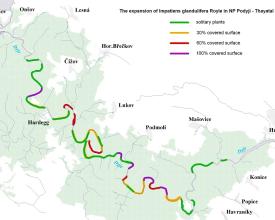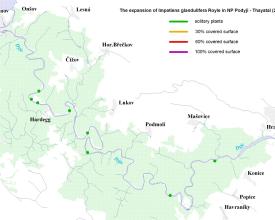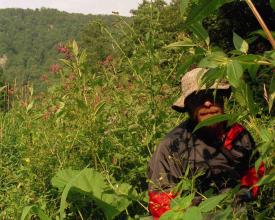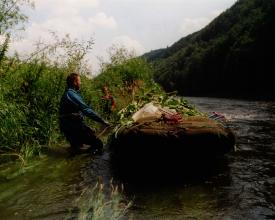
Coopération transfrontalière pour l'élimination d'une plante fluviale envahissante
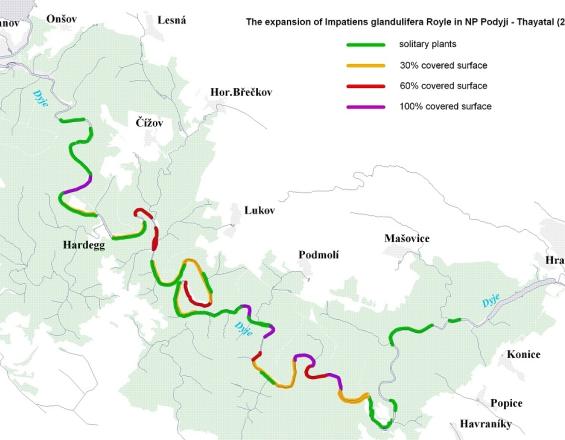
L'éradication de la balsamine néophyte de l'Himalaya (Impatiens glandulifera) est un projet commun réussi de deux parcs nationaux limitrophes, Thayatal (AT) et Podyjí (CZ), qui a conduit à une diminution significative des plants de balsamine de l'Himalaya dans la vallée fluviale et au retour des plantes indigènes. Les facteurs de réussite les plus importants ont été l'approche commune de la gestion de la vallée fluviale, l'accès aux deux rives de la rivière par le personnel tchèque, le changement dans la gestion des prairies de la vallée fluviale et la surveillance conjointe continue dans la vallée fluviale.
Contexte
Défis à relever
Emplacement
Traiter
Résumé du processus
Blocs de construction
Surveillance des plantes envahissantes
Facteurs favorables
Leçon apprise
Communication avec le personnel des zones protégées transfrontalières
Facteurs favorables
Leçon apprise
Élimination transfrontalière conjointe d'une plante envahissante
Facteurs favorables
Leçon apprise
Coordonner la gestion des prairies avec les propriétaires fonciers locaux
Facteurs favorables
Leçon apprise
Impacts
Le projet commun de surveillance et d'éradication des espèces envahissantes dans les deux parcs a été un grand succès. La balsamine de l'Himalaya a disparu des deux parcs nationaux à l'exception de quelques stocks isolés. Ainsi, les impacts problématiques sur l'écosystème de la rivière Thaya dus à la propagation rapide de la néophyte ont été évités. L'élimination ciblée de la balsamine de l'Himalaya a commencé en 1995 du côté tchèque et en 2001 du côté autrichien, après la création du parc national de Thayatal en 2000. La population de balsamines de l'Himalaya a alors diminué rapidement. L'effet positif surprenant a été renforcé par les grandes inondations de 2002, qui ont également empêché la propagation massive de la balsamine de l'Himalaya. Depuis lors, la plante a pratiquement disparu de la vallée fluviale. La surveillance conjointe et l'élimination de la balsamine de l'Himalaya et d'autres néophytes envahissantes dans la vallée fluviale, ainsi que le fauchage des prairies fluviales par les propriétaires terriens locaux, ont lieu chaque année. L'expérience d'une coopération réussie par le biais d'efforts conjoints d'éradication et de surveillance des espèces envahissantes a apporté une valeur ajoutée qui encourage et facilite la future collaboration transfrontalière.
